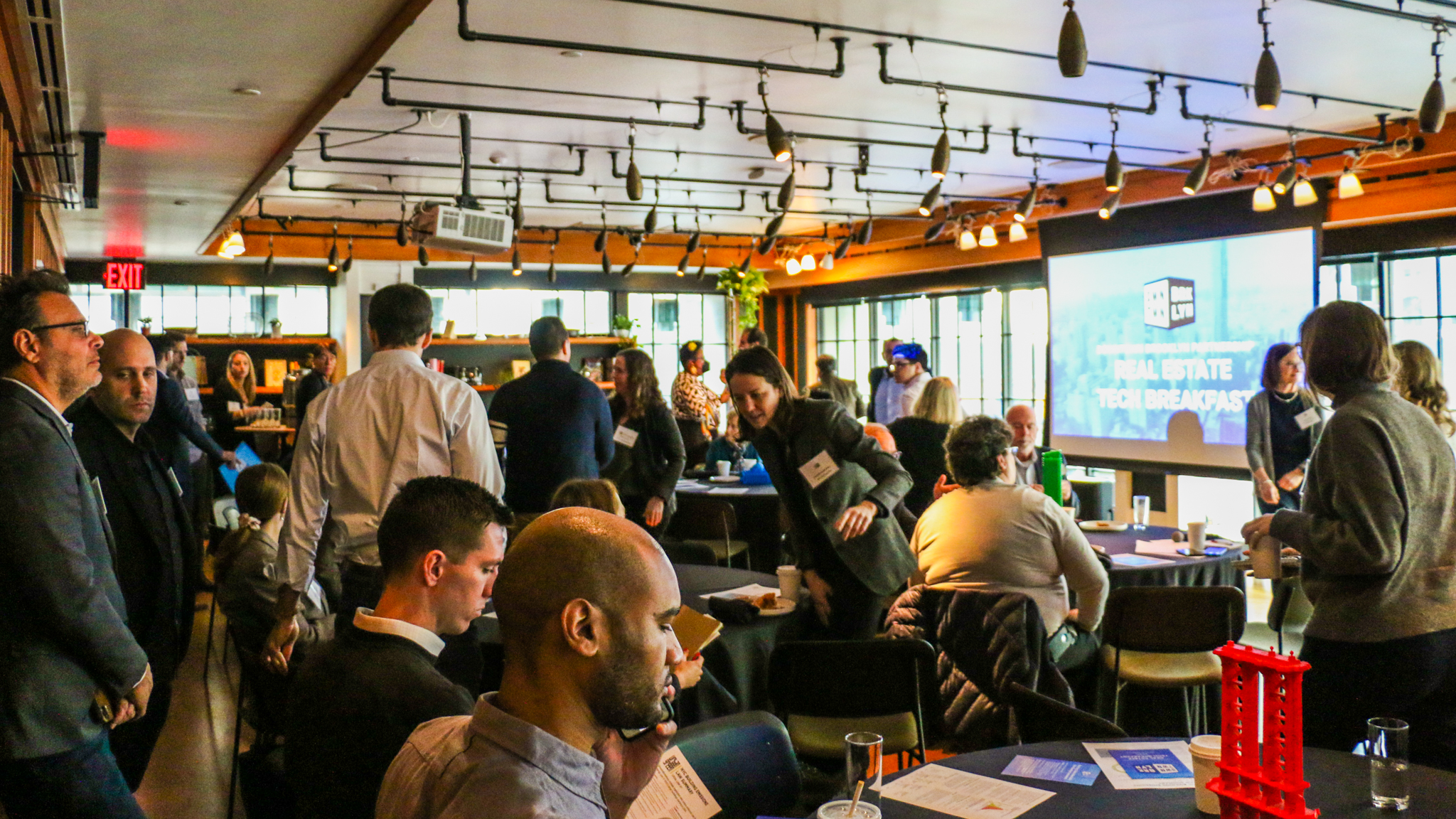Leaders from across Brooklyn’s real estate and climate-tech innovation community came together to address sustainability and climate emissions targets set by New York City’s Climate Mobilization Act.
Over 70 leaders in New York City real estate and technology gathered at the Downtown Brooklyn Partnership’s Real Estate Tech Breakfast at the Ace Hotel Brooklyn to discuss innovation in climate tech. As part of the landmark Climate Mobilization Act signed in 2019, Local Law 97 is one of the most ambitious plans for reducing emissions in the nation with the goal to reduce the emissions produced by the city’s largest buildings 40% by 2030 and 80% by 2050. Local Law 97 impacts roughly 50,000 buildings and nearly 60% of the New York City’s building square footage. Within Downtown Brooklyn, we estimate nearly 140 buildings and 32% of the neighborhood’s building area will be impacted. Generally, Downtown Brooklyn is in better shape towards compliance because of the large of amount of new construction that has occurred in the neighborhood.
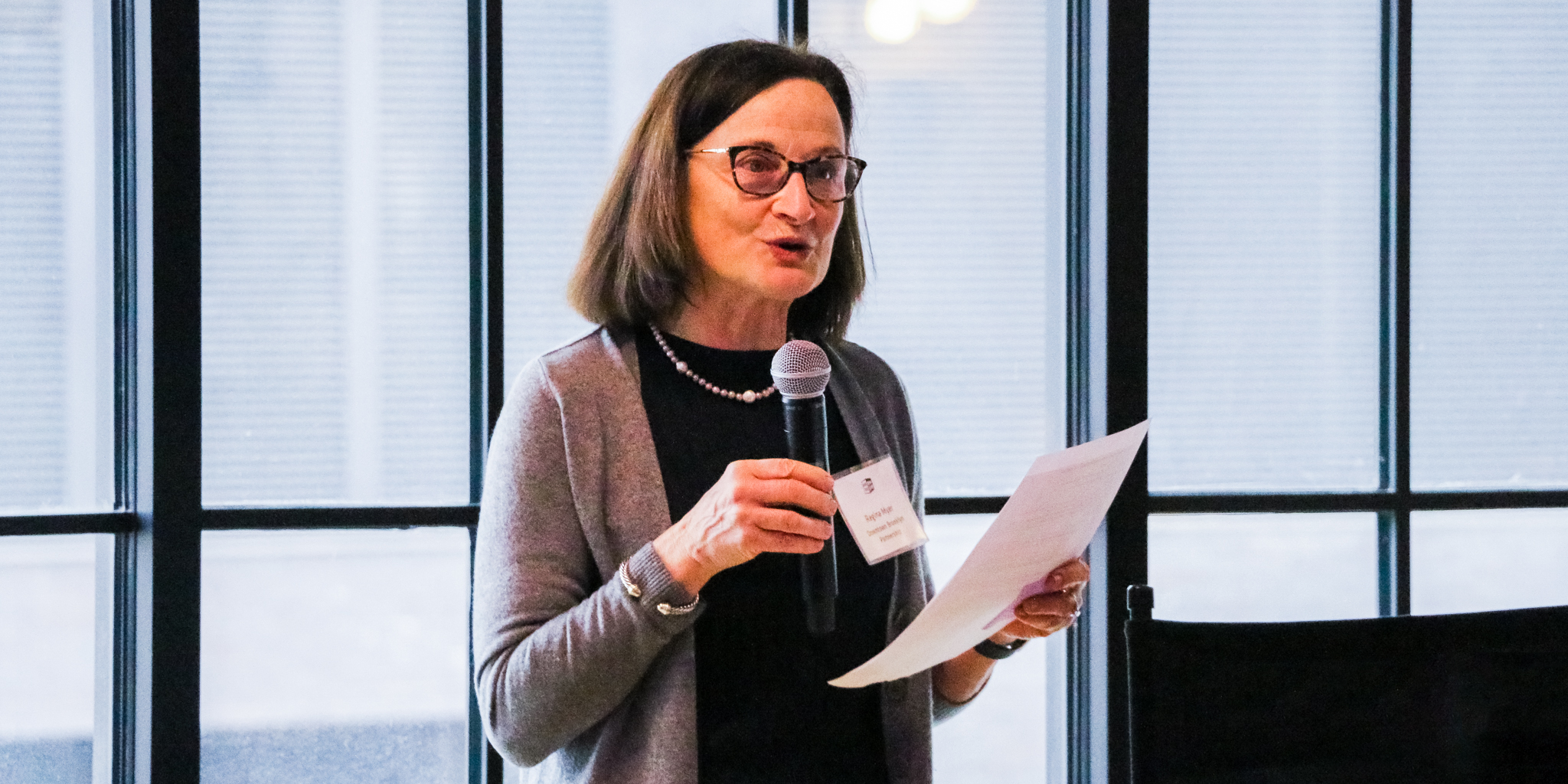
DBP President Regina Myer kicked off the event, welcoming guests and DBP Chairman, Ofer Cohen, and NYU Tandon School of Engineering Associate Dean, Sayar Lonial, offered opening remarks. All emphasized the exponential growth of tech and innovation in Brooklyn, a feat that the Downtown Brooklyn Partnership is proud to support and strengthen. Real estate professionals heard about policy breakthroughs, creative technology, and industry initiatives to tackle decarbonization in the built environment.
The first panel discussion jumped off with a conversation between real estate professionals on their compliance strategies with Local Law 97. Michael Rudin, Executive Vice President of Rudin Management, moderated a panel featuring Molly Dee-Ramasamy of JB&B Engineers, David Lombino of Two Trees Management and David McCarty from Alloy Development. The panelists discussed their most recent projects that focused on electrification, efficient building envelope construction and monitoring building performance. Decarbonization and electrification are core components of compliance of Local Law 97, leading institutional investors to look toward buildings like those designed by fellow panelists as being “future proof.”
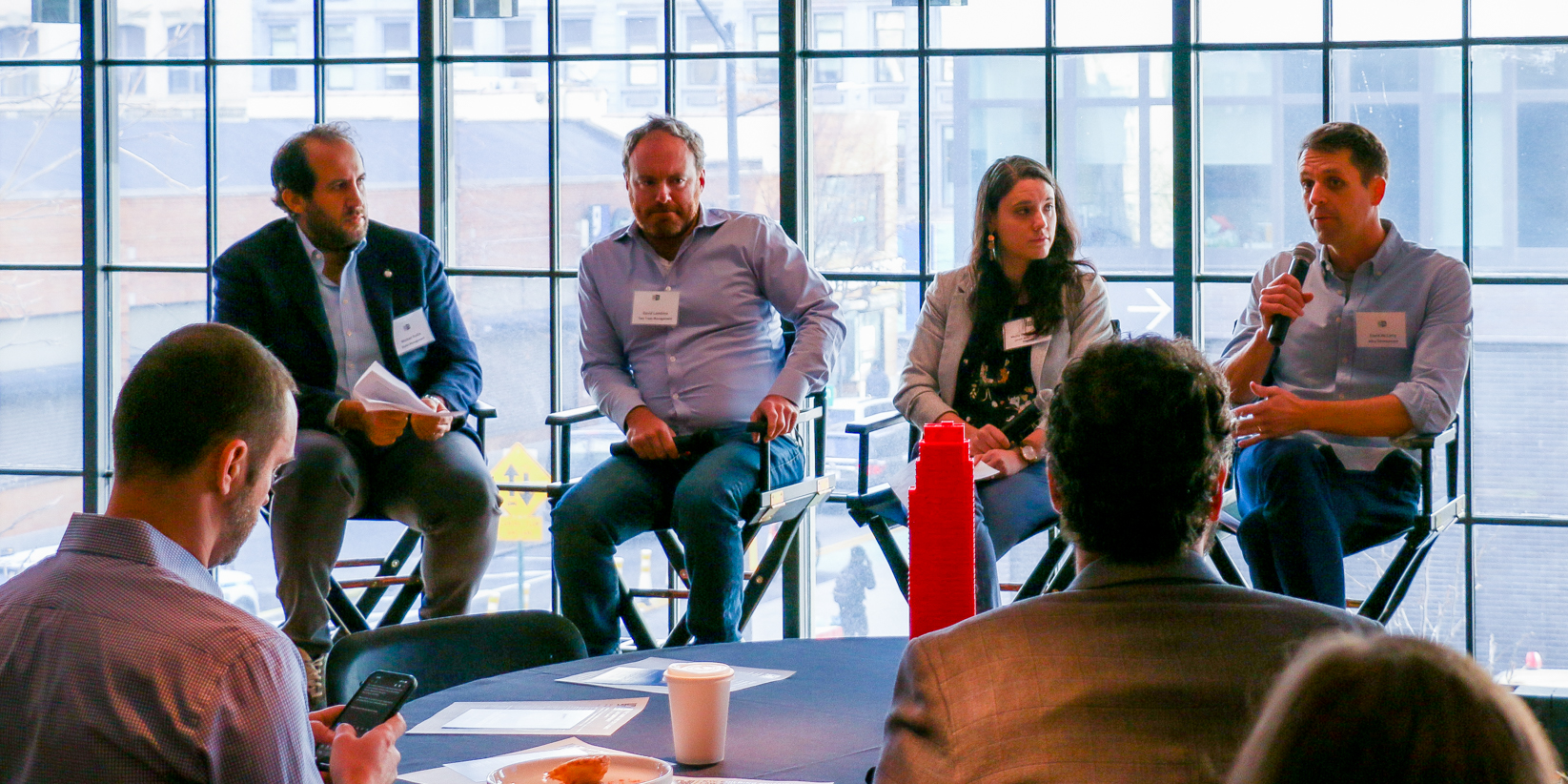
During the second panel, leaders from three organizations and companies shared intel on their innovative products and services which aide in the creation of energy efficient buildings, helping property owners achieve compliance. Lindsay Greene, President and CEO of the Brooklyn Navy Yard, led a discussion with Matthew Isaacs of Radiator Labs, Stephen Levin of Solar One and Nick Lombardi of NineDot Energy.
NineDot, based in NYU’s Urban Future Lab, focuses on urban clean energy via battery storage providing grid flexibility. Radiator Labs, based in the Brooklyn Navy Yard, strives to decarbonize older buildings using insulated radiator covers and they are working to convert the excess heat trapped by the cover into a heat battery that will conserve and reuse energy. Solar One, is a non-profit whose initiatives fill in gaps where the clean energy market is not reaching, connecting sectors such as low incoming housing, non-profits, and underserved communities with access to clean energy solutions.
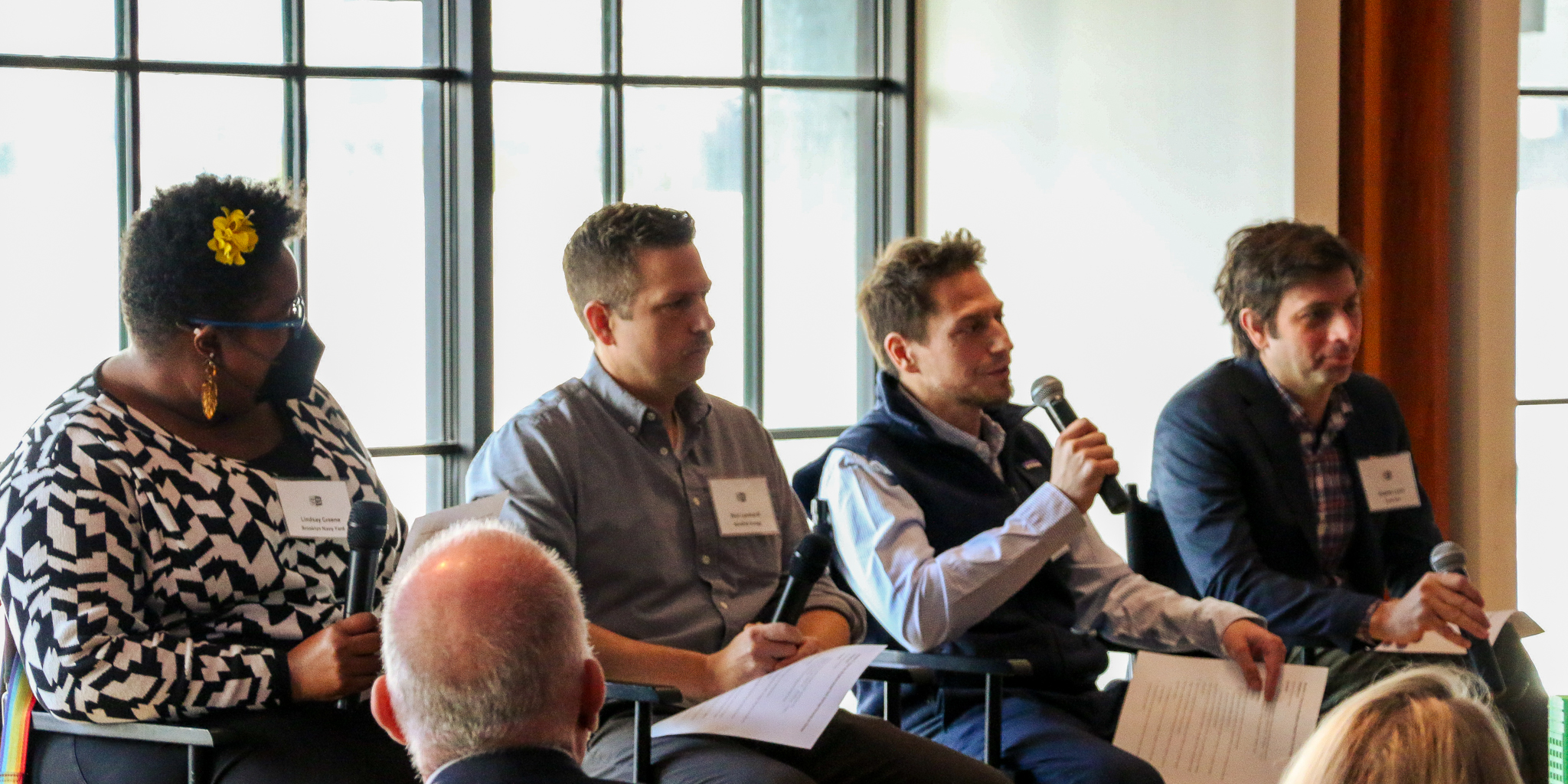
Panelists engaged in a lively discussion emphasizing the roles each group plays in achieving energy efficient construction. Notably, there was a unanimous agreement on the need for more trades people to support installation of the products and technology produced by startups.
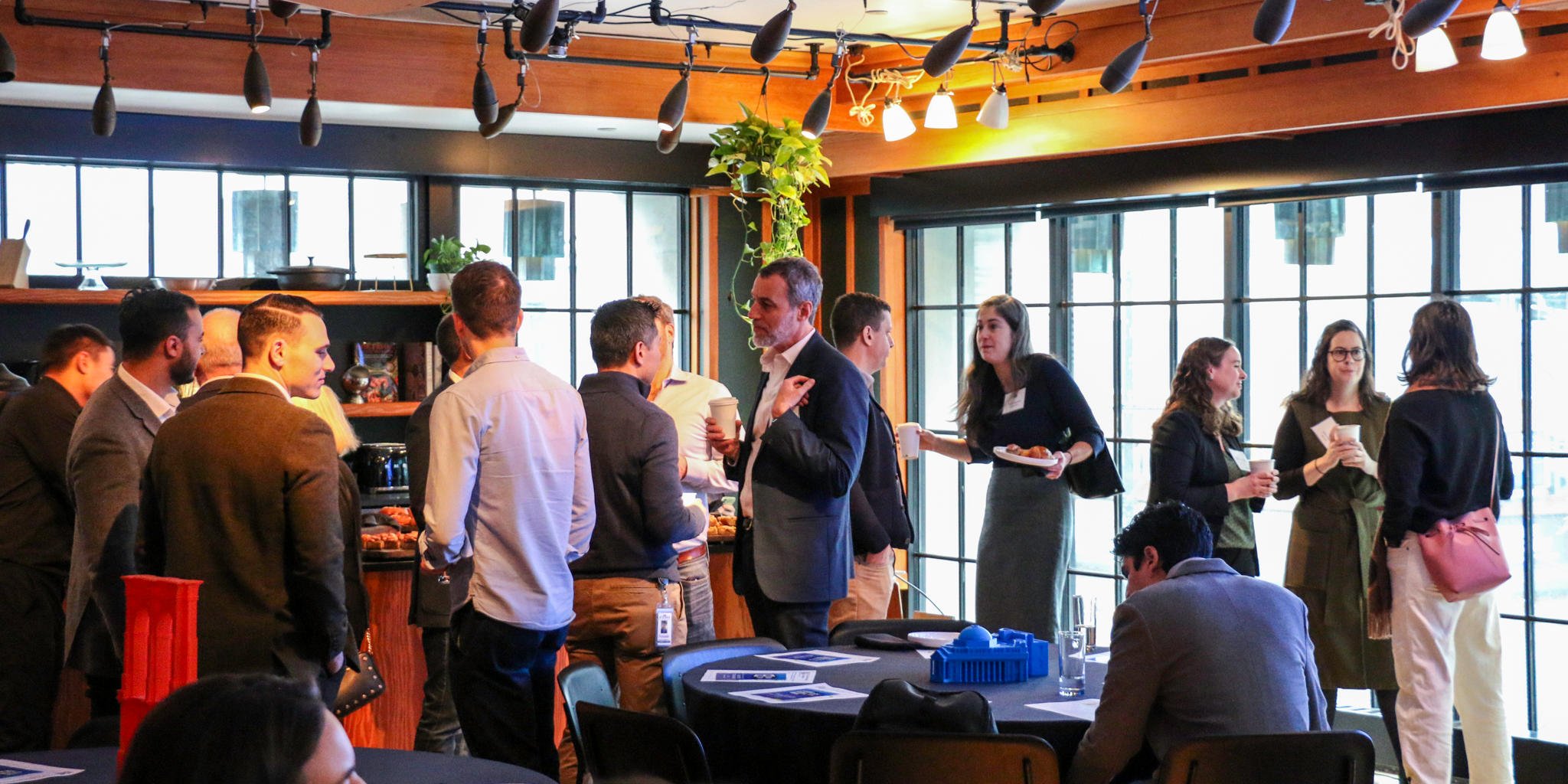
With collaboration at heart of both conversations, both groups acknowledged the triumph of Local Law 97, which has catalyzed a high level of involvement from players at all levels of real estate, government and technology, leading to amazing progress in the rethinking of common building practices.
